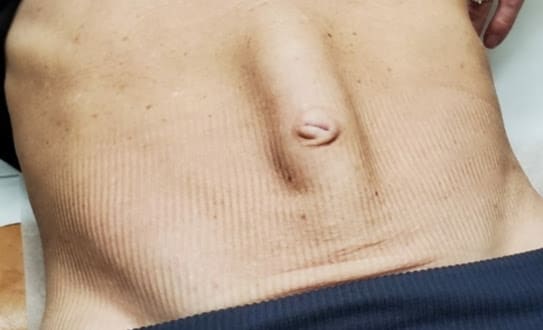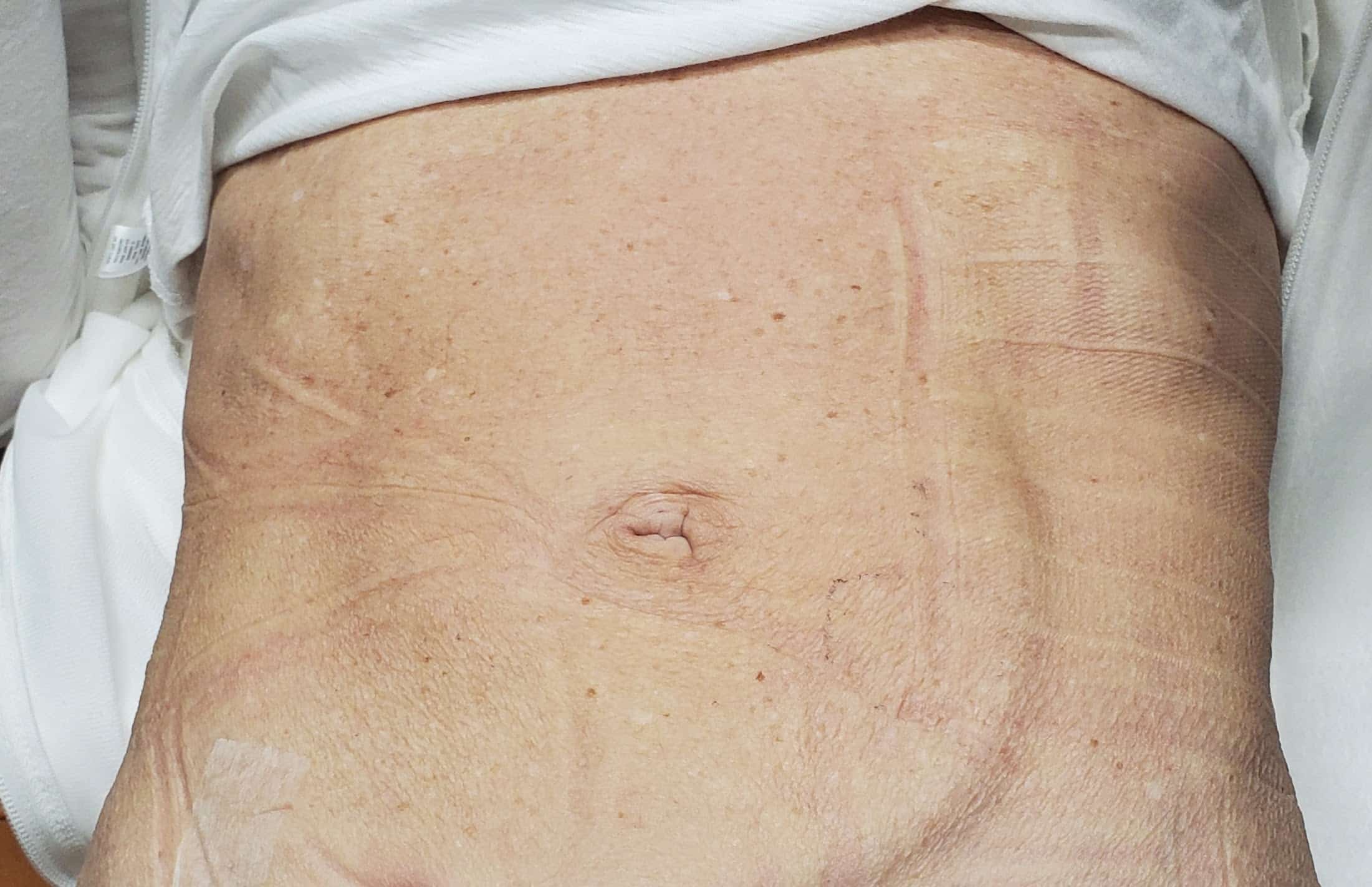Dr. Brian Jacob in NYC performs a non mesh laparoscopic diastasis recti repair on very select patients
Before and After Diastasis Surgery by Dr. Jacob


What is diastasis recti?
A diastasis of the abdominal wall, (diastasis recti), is not a hernia. Clinically, a diastasis may look like a hernia in the sense that when the abdomen is flexed, there is a noticeable and cosmetically unpleasing bulge, usually located in the upper abdomen in the midline, above your belly button. But there is a big difference. A hernia is a hole in the fascia. A diastasis is just stretched out midline fascia, and not a real hernia. Thus a diastasis has no real incidence of developing an emergent incarceration or strangulation. A diastasis, with stretched out midline fascia, results in your two rectus muscles being far apart.

How do I know if I have diastasis recti?
Diastasis recti can present as a bulge or pain (or both) in your abdomen. Abdominal wall function weakness is a common symptom, and has often been reported as improved after diastasis repair. However, despite being symptomatic, a diastasis repair alone is still considered elective, cosmetic, and is therefore not reimbursed by most insurance companies.
No Mesh Laparoscopic Diastasis Recti Repair
Dr. Brian Jacob offers a minimally invasive (laparoscopic) non-mesh diastasis repair. The procedure has been vetted and accepted by colleagues internationally. There is no skin excision, which is a big difference from a traditional plastic surgery abdominoplasty. This surgery is only offered to select patients. Please discuss all of the risks, expectations, and potential benefits with your surgeon. Recurrent diastasis recti and hernia formation is possible. Seromas are possible. Cosmetic results can not always be guaranteed. This surgical video may contain graphic surgical images for mature audiences only. It is designed with the sole intent to educate other surgeons.
How do I know if I need surgery?
If you think you have a diastasis recti, but do not want a full abdominoplasty by a plastic surgeon, and you do not want mesh used, then make a consult with Dr. Brian Jacob to discuss your options. Many diastasis do NOT require surgery. Some surgeons are using minimally invasive approaches (laparoscopy and robotics) to suture close the stretched out fascia and thus reapproximate the rectus muscles. Insurance usually does not cover this procedure since technically this is not a hernia repair. Each case needs to be individualized. Most surgeons would recommend nonoperative attempts that include weight reduction and physical therapy. Specific physical therapy programs may exist in your region.
Imaging for diastasis recti is sometimes useful and your surgeon may order a CTSCAN. This CTSCAN can identify the extent and size of the diastasis, and can be used to accurately measure how far apart your rectus muscles are, and confirm that it is not a hernia. Some patients have small hernias, or an umbilical hernia, within the diastasis.
How is diastasis repaired?
Repair options for diastasis recti include:
- no surgery. Trial of time and / or physical therapy.
- open primary repair (often done by a plastic surgeon at the same time as an abdominoplasty to removed excess skin)
- open mesh repair (This is rarely done or needed for primary diastasis).
- laparoscopic or robotic diastasis suture repair with or without mesh reinforcement. If mesh is used, then suture fixation, tack fixation, or a combination are common. The main objective here is to use a suture to reapproximate your rectus muscles to the midline.
- Dr. Jacob offers a laparoscopic repair of diastasis without mesh for select cases.
Recovery after diastasis repair

Are there risks to diastasis surgery?
Some surgical risks include, but are not limited to:
Recurrences, chronic pain, bowel obstruction, enterotomy, mesh erosion, fistula, seroma, hematoma, and infection.
Surgical Preparation
Patients with obesity (BMI greater than 35) should try to lose weight to keep a body mass index less than 35 if possible. If you have obesity, it is not advised to have a diastasis repair as the recurrence rates are quite high.
Patients must quit smoking prior to any surgery.
Schedule A Consultation
To learn more about diastasis recti or to schedule an appointment, please call our office today at 212-879-6677 or fill out our online form below.




